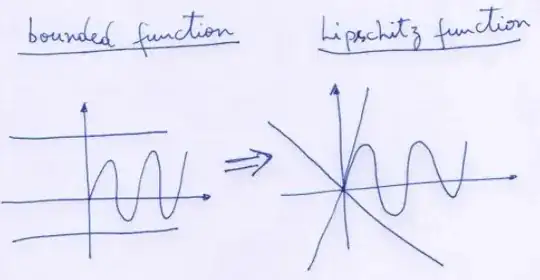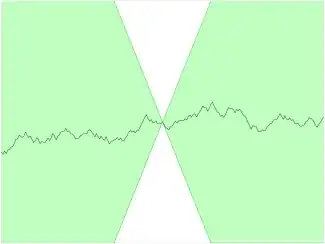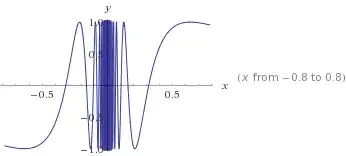A Lipschitz function is such that $$|f(x)-f(y)|\leq \alpha |x-y|$$ for any points you pick. Writing this as $$\left|\frac{f(x)-f(y)}{x-y} \right|\leq \alpha $$
what we're saying is that the slope of the secant line joining $(x,f(x))$ and $(y,f(y))$ is always bounded above by $\alpha$. An example of a Lipschitz function is $\sin x$, or $x$. An example of a function which is not Lipschitz but is bounded is $$\sin (x^2)$$ over $\Bbb R$. This is because as we go further towards $+\infty$, the oscillation becomes faster, and thus the slope of the secant lines get nearer and nearer to vertical ones.
An example of a function that is not Lipschitz nor bounded is $\sqrt x$ over $\Bbb R_{>0}$. This is because if we fix $x=0$ and make $y$ very close to $0$, the slope of the secant line grows without bound.
Finally, we can give an example of a function which is Lipschitz but isn't bounded: $x+\sin x$ over $\Bbb R$. Its slope will never get larger than $1$.


